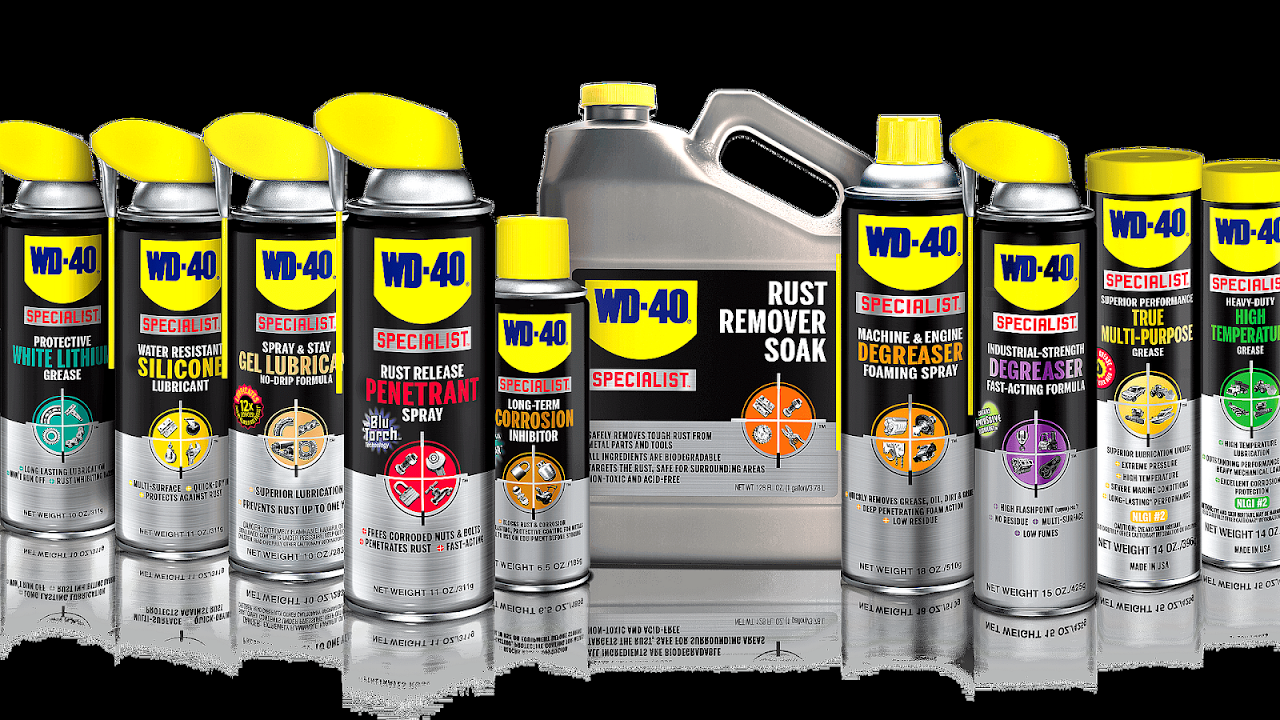
WD-40 is the trademark name of a penetrating oil and water-displacing spray. The spray is manufactured by the San Diego, California-based WD-40 Company.

Maps, Directions, and Place Reviews
History
WD-40 was developed in 1953 by Iver Norman Lawson in San Diego, California. "WD-40" is abbreviated from the term "Water Displacement, 40th formula", suggesting it was the result of Larsen's 40th attempt to create the product. The spray, composed of various hydrocarbons, was originally designed to be used by Convair to protect the outer skin and, more importantly, the paper-thin balloon tanks of the Atlas missile from rust and corrosion. These stainless steel fuel tanks were so fragile that when empty they had to be kept inflated with nitrogen to prevent them from collapsing. WD-40 was later found to have many household uses and was made available to consumers in San Diego in 1958.
Wd40 Fish Oil Video
Function
The long-term active ingredient is a non-volatile viscous oil which remains on the surface to which it is applied, giving lubrication and protection from moisture. This oil is diluted with a volatile hydrocarbon to make a low viscosity fluid which can be aerosolized to penetrate crevices. The volatile hydrocarbon then evaporates, leaving behind the oil. A propellant (originally a low-molecular-weight hydrocarbon, now carbon dioxide) creates pressure in the can to force the liquid through the can's nozzle before evaporating.
Its properties make it useful in both domestic and commercial settings. Typical uses for WD-40 include removing dirt and extricating jammed screws and bolts. It can also be used to loosen stubborn zippers and displace moisture.
Due to its low viscosity, WD-40 is not always the preferred oil for certain tasks. Applications that require higher viscosity oils may use motor oils. Those requiring a mid-range oil could use honing oil.
Formulation
WD-40's formula is a trade secret. To avoid disclosing its composition, the product was not patented in 1953, and the window of opportunity for patenting it has long since closed. WD-40's main ingredients as supplied in aerosol cans, according to U.S. Material Safety Data Sheet information, are:
- 50% "aliphatic hydrocarbons". The manufacturer's website claims this ratio in the current formulation cannot accurately be described as Stoddard solvent, a similar mixture of hydrocarbons.
- <25% petroleum base oil. Presumably a mineral oil or light lubricating oil.
- 12-18% low vapor pressure aliphatic hydrocarbon. Reduces the liquid's viscosity so that it can be used in aerosols. The hydrocarbon evaporates during application.
- 2-3% carbon dioxide. A propellant which is now used instead of the original liquefied petroleum gas to reduce WD-40's flammability.
- <10% inert ingredients.
The German version of the mandatory EU safety sheet lists the following safety-relevant ingredients:
- 60-80% hydrogen-treated heavy naphtha (a petroleum product used in wick-type cigarette lighters)
- 1-5% carbon dioxide
It warns of the product's high flammability and the risk of irritation to human skin when repeatedly exposed to WD-40. Nitrile rubber gloves and safety glasses should be worn (ordinary rubber disintegrates if exposed to petroleum products). It also mentions that water is unsuitable for extinguishing burning WD-40.
In 2009, Wired published an article with the results of gas chromatography and mass spectroscopy tests on WD-40, claiming that its ingredients make it resistant to freezing.
Source of the article : Wikipedia


EmoticonEmoticon